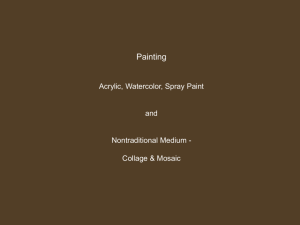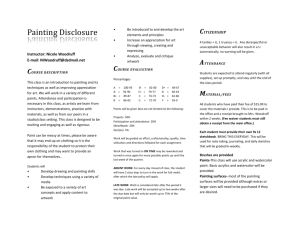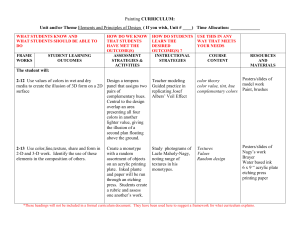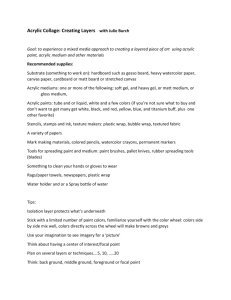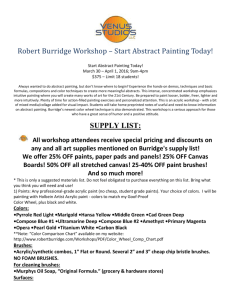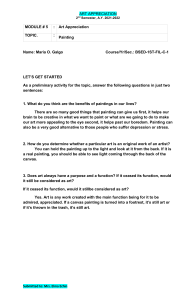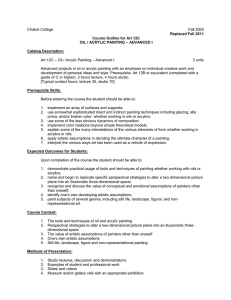Acrylic Collage Assignment Sheet
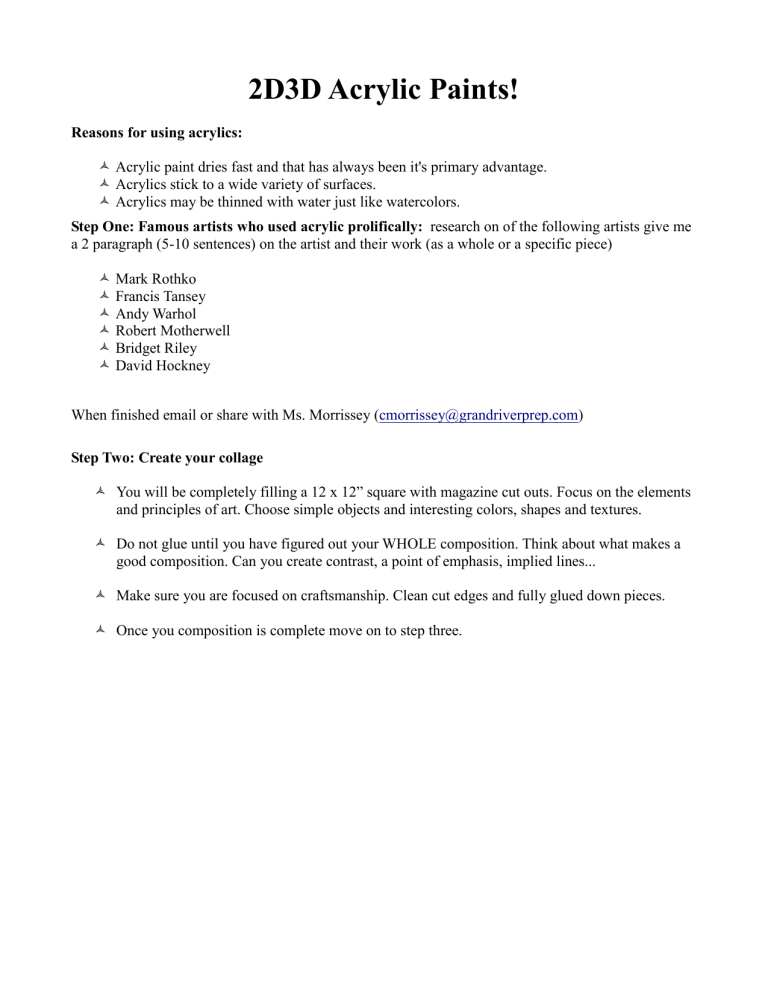
2D3D Acrylic Paints!
Reasons for using acrylics:
Acrylic paint dries fast and that has always been it's primary advantage.
Acrylics stick to a wide variety of surfaces.
Acrylics may be thinned with water just like watercolors.
Step One: Famous artists who used acrylic prolifically: research on of the following artists give me a 2 paragraph (5-10 sentences) on the artist and their work (as a whole or a specific piece)
Mark Rothko
Francis Tansey
Andy Warhol
Robert Motherwell
Bridget Riley
David Hockney
When finished email or share with Ms. Morrissey ( cmorrissey@grandriverprep.com
)
Step Two: Create your collage
You will be completely filling a 12 x 12” square with magazine cut outs. Focus on the elements and principles of art. Choose simple objects and interesting colors, shapes and textures.
Do not glue until you have figured out your WHOLE composition. Think about what makes a good composition. Can you create contrast, a point of emphasis, implied lines...
Make sure you are focused on craftsmanship. Clean cut edges and fully glued down pieces.
Once you composition is complete move on to step three.
Step Three: Painting!
Basic techniques applied with the use of acrylic paint:
Use masking tape directly on the surface you are painting to create "hard edge." Remove this only after the paint has dried and don't use too much paint or the tape will be difficult to remove.
Blend colors on the surface of the painting while you are painting. This creates an entirely different look from those mixed colors from your palette.
Use thickening agents like acrylic gel, sand, saw dust, etc... to enhance the surface of your painting.
Remember once you put your paint down it is there for good. Plan out your composition and techniques carefully in advance.
COLLAGE
Painting Procedures:
PAINTING
Get your paints and your paper
Measure out your 12x12” square
Carefully with pencil recreate your your collage (just do the outline of everything) it should look as close to the same as possible.
YOU WILL BE MANIPUATING COLOTS AND TEXTURES TO MEET REQUIRMENTS
Your painting much include:
gray scale (graded)
complimentary colors (in at least 3 different spots)
pointillism (creating color and value using dots....small dots!!) in at least 3 different places
◦ think about how you can overlay dots and colors to create new colors, tints, tones and shades.
Remember outside of you technique and color manipulations your images should look the same
:)
